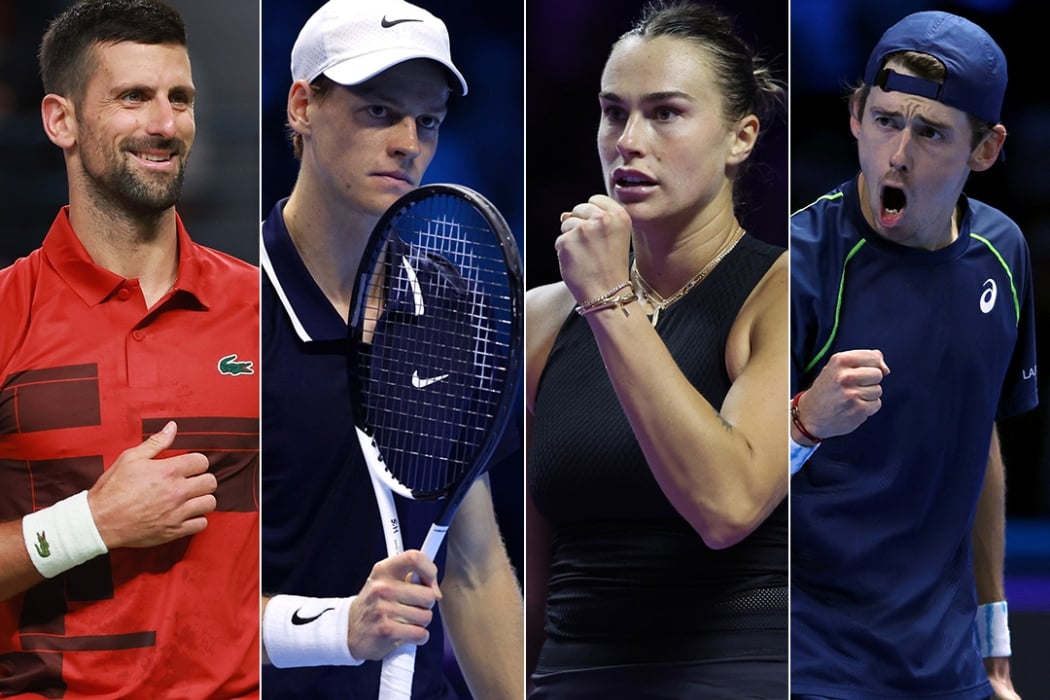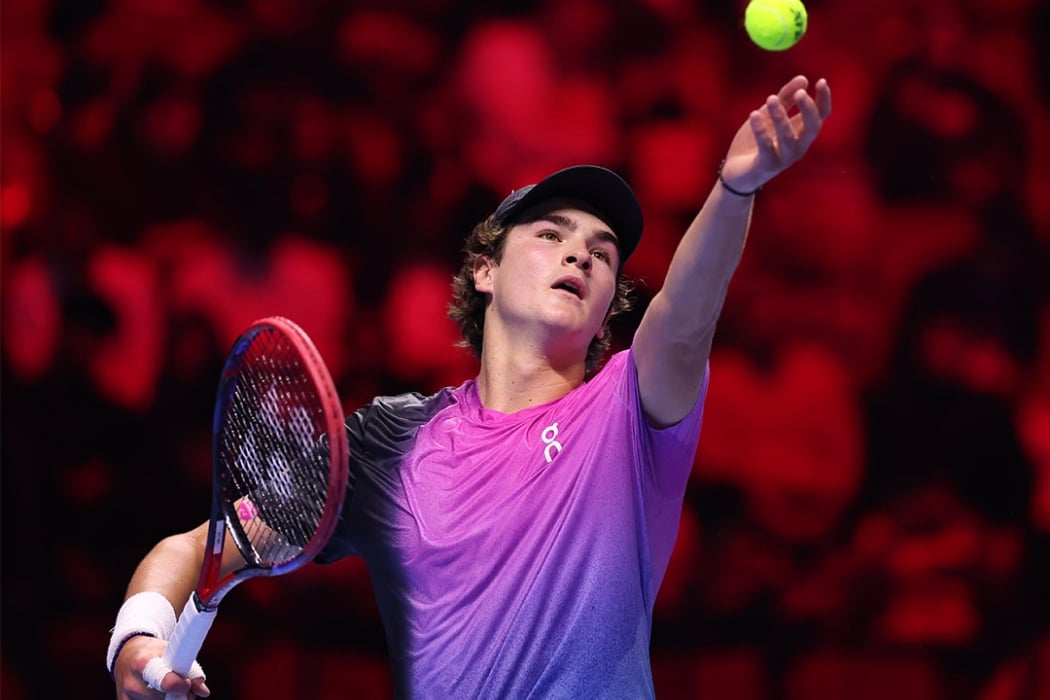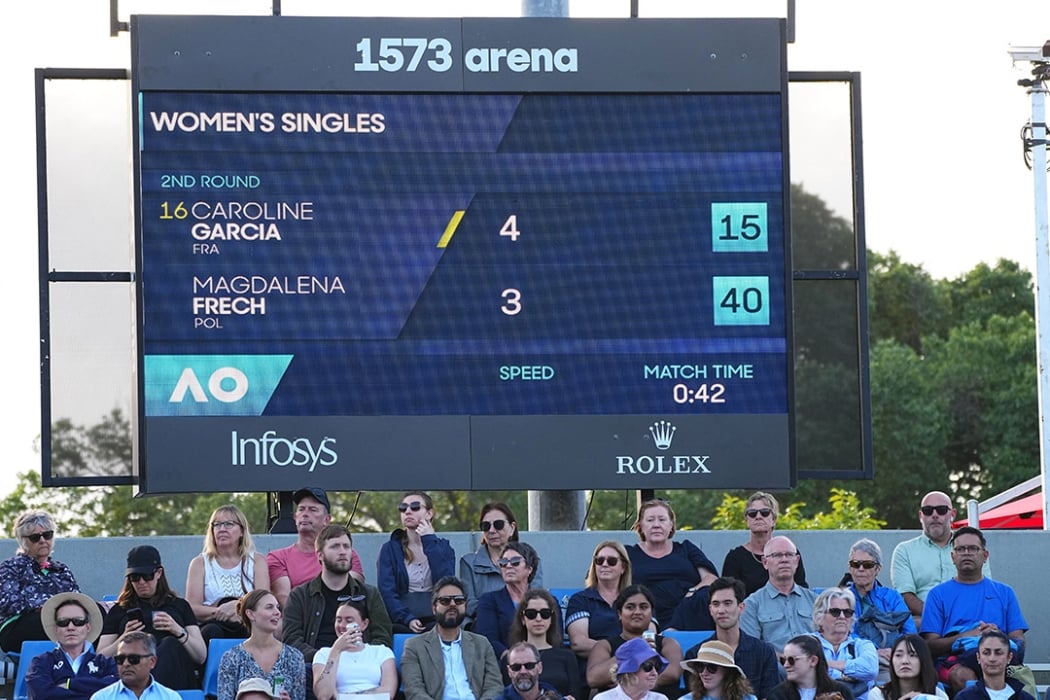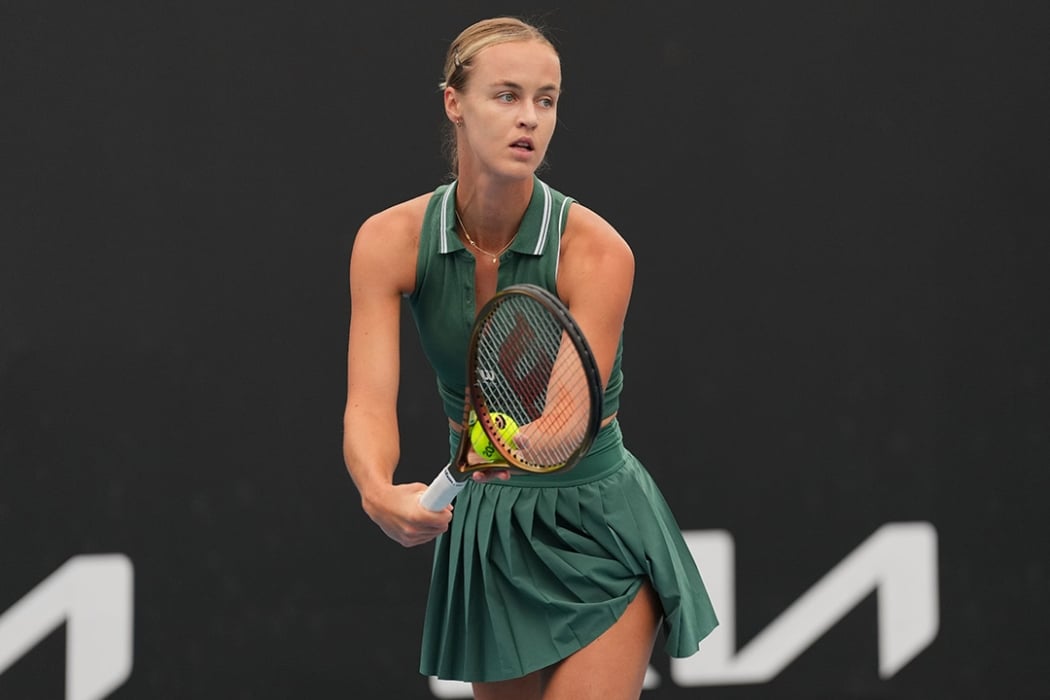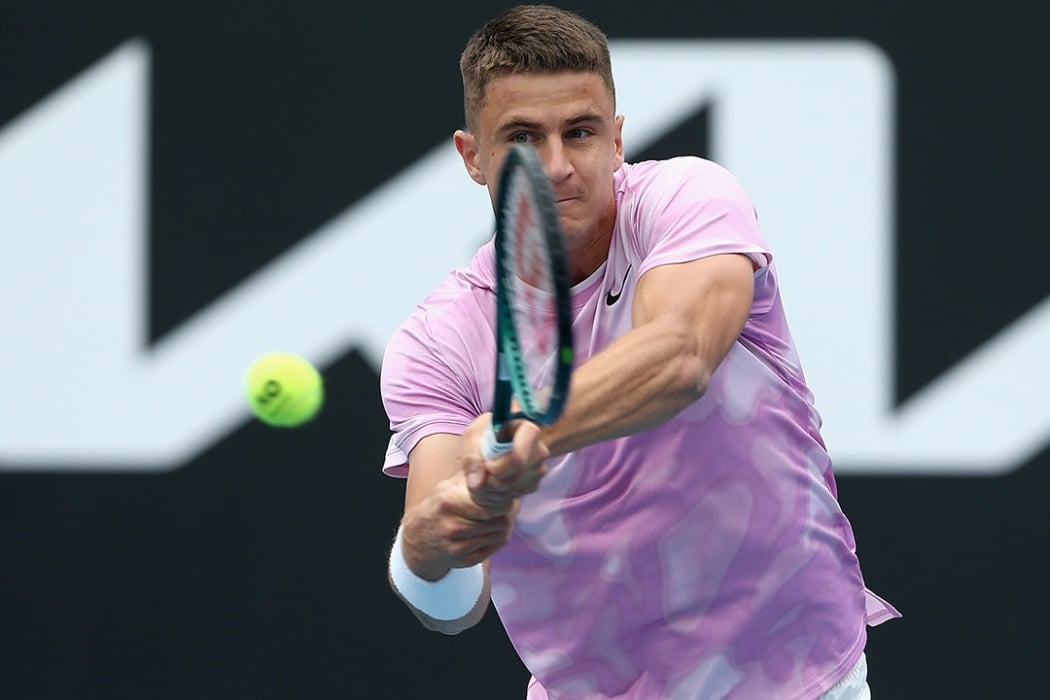There's no sport quite like tennis. In our explainer series, we de-code everything you need to know about scoring, draws, seedings, tournaments and all the other intricacies of this great game. You'll be a tennis expert come Australian Open 2025!
The Australian Open 2025 singles draws will be revealed on 9 January. But did you know that they first began to take shape on 2 December?
AO 2025 draw: How to watch and follow along
Grand Slam draws – showing who plays whom – require many steps to finalise, which are all ticked off over a six-week period leading into the tournament..
Tournament organisers don’t simply take the top-ranked men and women and drop them into brackets. It’s a little more involved than that – and we’re going to take you through it.
What is a draw?
The ATP Tour (the men’s professional tour) website defines a draw as “the knockout tournament bracket that determines the match-ups at an event. It [appears] just like any other tournament, like the knockout stages of football’s World Cup or March Madness in NCAA basketball.”
The draw differs from the order of play, a daily schedule of the matches assigned to each court during a tournament.
For the draw, player names are placed onto a series of lines; when you look at a tournament draw on paper or on screen, these lines (sort of) resemble a family tree.
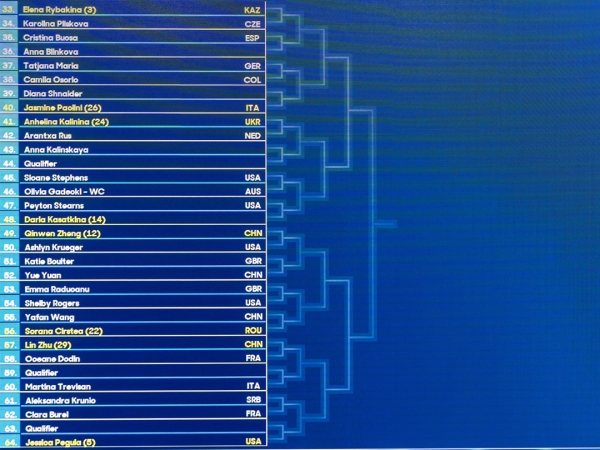
Which players get into the AO draw?
The AO’s men’s and women’s singles main draws comprise 128 players, just like Roland Garros, Wimbledon and the US Open, the three other Grand Slam events.
The 128-player fields are made up of:
- 104 direct entrants (the highest-ranked players)
- 8 wildcards (selected by the tournament organisers)
- 16 qualifiers (players who win through the pre-event qualifying competition)
The top 104 players earn direct entry based on their ranking six weeks before the main draw starts. New rankings positions are released each week on a Monday, and as the AO 2025 main draw begins on 12 January, players were directly accepted in the order they appeared on the 2 December rankings.
Fans often express surprise at seeing players, who did not earn direct entry, competing in qualifying with a ranking well inside the top 104.
For example, Alycia Parks led the AO 2025 qualifying entry list, ranked No.82. (She was eliminated in the first round of qualifying on Tuesday.) Yet she was outside the rankings cut-off when the main-draw entry lists were released the week of 2 December.
That same week, Parks won a smaller-level event in Angers, France, boosting her ranking from world No.103 to just outside the top 80. That rise was reflected in the next rankings release on 9 December – a week too late for AO 2025 main-draw entry.
Protected/special rankings
But wait a minute: how was Parks not an AO 2025 direct entrant as world No.103, if the top 104 players are accepted?
That’s because the direct entry ranking cut-off for the women’s singles event this year was actually No.98, not No.104.
And that’s because six players used ‘special rankings’ to enter.
The men’s tour calls them ‘protected rankings’, but they’re essentially the same thing on both tours, allowing players to freeze their ranking where it was at the beginning of an absence, and use that ranking to enter tournaments when they return.
The women’s tour (WTA) rulebook states that players can apply for a special ranking if they “have an Out-of-Competition Period … [and] submit documentation of a Medical Condition, Parental Start, or Pregnancy…”
For example, Belinda Bencic was ranked 913th on 2 December, but had been granted a special ranking of No.15, her absence due to pregnancy. She gave birth to daughter Bella in April 2024, missing 13 months in total before her October comeback.
That means that to create the draw for AO 2025, Bencic slotted into position No.16 on the entry list, directly beneath actual world No.15 Jelena Ostapenko.
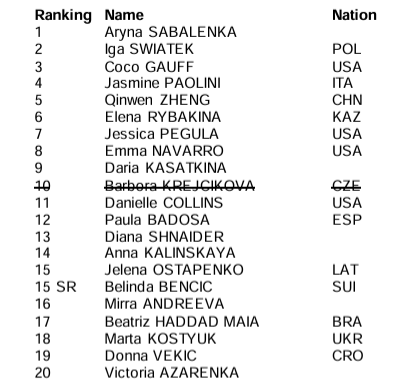
Five other women used special rankings well inside the cut-off, taking six valuable positions inside the top 104 – and making them unavailable to those players actually ranked No.99-104, including Parks.
What happens if a player withdraws?
In the weeks after the release of the entry lists, some players drop out.
Since 2 December, Caroline Wozniacki, Barbora Krejcikova and Karolina Pliskova have withdrawn from Australian Open 2025, meaning three new names must replace them on the women’s entry list.
Sebastian Ofner and Emil Ruusuvuori withdrew from the men’s singles, freeing up two spots on the men’s main-draw entry list. Like the women’s, the men’s included six protected-ranking entries and thus a cut-off of world No.98.
Replacements are taken from the main-draw alternates list. For AO 2025, the highest-ranked man on that list – the first outside the main-draw cut-off – was 99th-ranked Jacob Fearnley, who was elevated to replace Ofner. Then 100th-ranked Federico Coria entered the main draw list to replace Ruusuvuori.
Wildcards
Shortly after the entry lists were released, the process of awarding wildcards began.
On 13 December, three-time Slam champion Stan Wawrinka and eight Australians were announced among AO wildcard recipients, securing their main-draw entry.
“[Wildcards are] players who are included in the draw at the sole discretion of the individual Grand Slam tournament,” explains the 2024 Official Grand Slam Rule Book.
Players don’t need a wildcard if they’re directly accepted. So you can assume any wildcard is not among the world’s top 104 players at the time of entry. Otherwise, their ranking is irrelevant. At AO 2021, Aussie comeback kid Li Tu had no ranking at all when he received a wildcard.
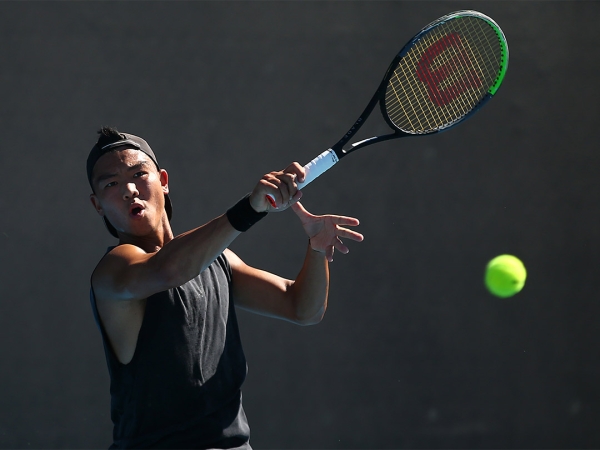
The Australian Open typically awards its eight men’s and eight women’s wildcards like this:
- One to the AO Asia-Pacific Wildcard Play-off tournament winner
- One to a French player, nominated by the French Tennis Federation
- One to an American player, nominated by the United States Tennis Association
- Five discretionary wildcards
The French and American wildcards are a reciprocal arrangement; at Roland Garros and the US Open, an Australian man and women are given main-draw wildcards.
Discretionary wildcards are most often awarded to Australian players, but sometimes also to a superstar on the comeback trail, like former world No.1s Justine Henin (2010) and Wozniacki (2024).
There is no set timeline for when wildcards are announced, except that all eight must be named before the draw is made.
Making the draw
At Australian Open 2025, the main draw will be made at 2.30pm AEDT on Thursday 9 January.
This is when the final list of 128 players are placed onto the various lines of the knock-out tournament bracket.
First, the 32 seeds, represented by numbered chips, and drawn from the AO trophies into specific lines.
[Editor’s note: Unsure what a ‘seed’ is? Find out more in this explainer!]
Then, the remaining 96 lines are filled by the unseeded direct entrants, the eight wildcards, and the 16 qualifiers – a process completed at random by a computer.
Placing the qualifiers
Like the main draw, the men’s and women’s qualifying competition features a field of 128 players and entry lists to determine the competitors.
The players on those entry lists fell outside the main-draw entry ranking cut-off, and did not receive a wildcard. The 128-player qualifying fields include 119 direct entrants and nine wildcards.
RELATED: Dismiss the qualifiers at your peril
With 16 going through, players must win three matches (or rounds) in qualifying to secure their place in the main draw. Even so, the successful qualifiers are not always known at the time the main draw is made.
The AO 2025 qualifying competition takes place on 6-9 January, but not all final-round matches on 9 January are likely to have been completed before the draw ceremony. Instead, placeholder text – “qualifier/lucky loser” – is used on the lines where qualifiers are drawn.
When all 16 qualifiers are known, they’re placed onto those lines to complete the draw.
Lucky losers
All that’s left to do is start playing the matches. Or is it?
There’s every chance the AO 2025 main draw remains unchanged from the time it’s completed on 9 January, to when first-round matches begin on 12 January.
But in that three-day period, another player could withdraw. Once the qualifying competition has started, the main-draw alternates list cannot be used to fill that gap.
This is where “lucky losers” come in, defined as “those players who have lost in the final round of the qualifying competition.”
The system is complicated – get into the weeds of it on page 29 of the 2024 Official Grand Slam Rule Book – but essentially, of the 16 players who lose in the final round of qualifying, the highest-ranked four are in contention, and one of those four is randomly selected to replace a withdrawn player.
Main-draw withdrawals can occur as late as minutes before the first point of a match is played. This means lucky losers must be on site, signed up, and, according to the Grand Slam Rule Book, “ready to play within five (5) minutes for men’s events and fifteen (15) minutes for women’s events after the announcement of the default.”
On the rare occasion this happens, it’s an excitingly unexpected opportunity for an Australian Open hopeful who had resigned themselves to not competing.
And it’s led to some phenomenal stories at other Grand Slam events, where players have made an eleventh-hour dash to be on site, ready for a lucky loser call-up.
